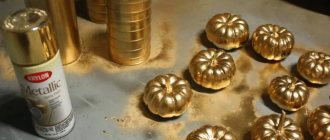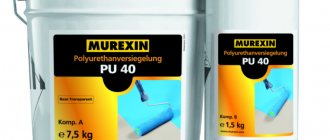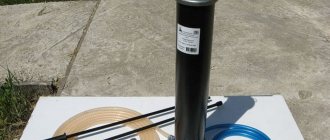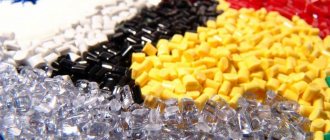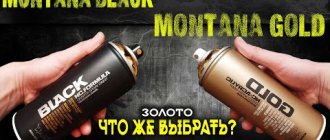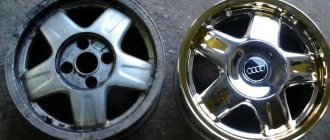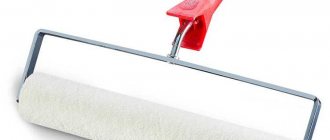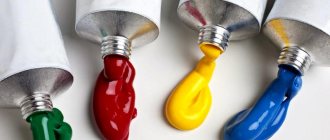When the plastic surface has lost its former decorative qualities, but is still intact and there is a desire to continue to use it, then painting can be applied. Painting will give an aesthetically pleasing appearance, but if done correctly. It is more convenient to choose aerosol paints for this purpose. Details about what kind of paint in cans is suitable for plastic and the rules for its use will be discussed below.
The nuances of choosing paint in spray cans
To choose the right aerosol paint in cans for plastic, first find out what type of plastic the item is made of. For different types you need a different composition, then the result will be of high quality. The following types of plastic are popular:
- ABS is used for the production of housing parts for smartphones, computers, household appliances and others;
- PVC is used for window frames, flooring, toys and more.
For these types, painting cannot be carried out without applying a primer layer. The primer provides the required level of adhesion to the material so that cracks and paint peeling do not appear during operation.
It is not always known what type of plastic needs to be glued. You can use a simple method to determine whether the surface should be primed. In a container where a plastic object can be placed, it is filled with water and the object is immersed. When the plastic sinks, priming is not required. If the object remains afloat, then applying a primer solution is mandatory.
To choose the right aerosol paint in cans for plastic, first find out what type of plastic the item is made of.
Main advantages
At factories, using special machines, ordinary paint is pumped into a spray can, and as a result, each person can fulfill their dreams - repaint everything they need in a different color. It is more profitable to buy this variety because:
- no need to buy a flute, a spray bottle, or a roller;
- the palette of paint colors in spray cans is varied;
- the degree of adhesion is very high;
- the paint does not dry out during storage;
- You can buy both oil paint in a can and acrylic paint, heat-resistant and more.
It’s a natural desire to buy it for testing, for the sake of experimentation, out of curiosity. Due to its features, it is in demand.
Heat-resistant paints in cans, the classic varieties, have a more advantageous composition compared to those in cans. The components, of course, are basically the same, but the proportions and consistency are different. This is an improved material for finishing work, restoration and decoration, a completely new product, innovative. Is it possible to become a supporter of only this option, to forget about the standard can of paint - that is the question.
Pros and cons of spray enamel
Aerosol paint for plastic has a number of positive properties. When deciding whether to choose this paint and varnish material, you should study its advantages:
- There is no need to purchase tools to apply paint;
- Ease of use;
- The result is a thin and beautiful layer of paint;
- Convenient to store, does not take up much space, long shelf life;
- Can be used to create a pattern or an unusual painting option, also for a simple coating;
- Wide range of colors. There are any colors: white, black, brown, beige, gold, etc. You can use the ral table for selection. You can get a glossy or matte effect;
- Suitable for wood and metal substrates including;
- Light shades retain their brightness for a long time and do not fade from ultraviolet radiation;
- Economical consumption, the can can paint a large area.
But aerosol paints have not only advantages, there are also disadvantages:
- Inability to add pigment. But the issue is resolved by the diversity of the palette. If necessary, you can get the required shade in specialized stores, which will then be filled into a container;
- Little experience working with aerosols can lead to smudges, because the plastic base is smooth. Therefore, you should practice before you start painting the desired object;
- Paint is sprayed over large areas; it may be necessary to protect nearby objects from paint;
- You cannot dilute the composition if the consistency seems uncomfortable;
- Small volume of cans, for this reason large objects may require the use of several aerosols;
- If they work outside, there should be no wind or precipitation.
The result is a thin and beautiful layer of paint.
Dyeing technology
To successfully apply paint and achieve the desired result, you must follow certain rules:
- Before painting, thoroughly clean and degrease the work surface and apply a primer.
- Protect nearby surfaces from accidental spray exposure.
- Shake the can first so that the composition becomes homogeneous, apply the paint at a distance of thirty to forty centimeters.
- It is recommended to apply the paint in two to three layers, taking a break until it dries completely.
- To avoid smudges, place the surface to be painted in a horizontal position. If this is not possible, as when decorating a wall, apply paint from top to bottom.
- If necessary, the work can be secured with varnish.
Note! You need to work with aerosols very carefully; use a respirator, eye mask and gloves for protection.
Properties and characteristics
Aerosol paints for plastic have different characteristics depending on their constituent elements. You can find heat-resistant ones, with an increased level of wear-resistant properties, waterproof and others. The selection should be made based on operating conditions and the characteristics of the material that will be painted.
Aerosol paints for plastic have different characteristics depending on their constituent elements.
Types and characteristics
You can choose a good spray paint for plastic if you understand the types that are sold in hardware stores. Then you can easily choose the best option for certain working conditions. Below we will discuss enamels by type in more detail.
You can choose a good spray paint for plastic if you understand the types that are sold in hardware stores.
Polymer
The base uses polymers, which make it possible to use them as a primer solution with coloring properties. They are distinguished by a high degree of adhesion. They can be safely used without priming the plastic.
They are distinguished by a high degree of adhesion.
With acrylates and/or polyurethane additives
This type is distinguished by better resistance to mechanical shocks. Therefore, they create additional protection for the base, and are used for surfaces that may be subject to friction and shock.
This type is distinguished by better resistance to mechanical shocks.
Structural
Structural coatings have a rough texture after drying. This helps cover minor surface imperfections. With it you can get a unique and interesting design of the item.
Structural coatings have a rough texture after drying.
Soft touch
This type creates a coating that is pleasant to the touch. It is similar to a rubberized surface, a velvet material. The appearance of the coating stands out due to its attractiveness.
The appearance of the coating stands out due to its attractiveness.
Monadic
They are chosen for PVC type plastic. It is a waterproof paint for plastic in cans. The level of adhesion is high, giving the base protection from ultraviolet rays.
The level of adhesion is high, giving the base protection from ultraviolet rays.
Waterproof
Moisture-resistant types are necessary in cases where there will be constant exposure to water during operation. A barrier layer is created to make the materials last longer.
Moisture-resistant types are necessary in cases where there will be constant exposure to water during operation.
Heat resistant
If the item will be used under high temperature influence, then this property is necessary. Aerosol spraying will be convenient for treating hard-to-reach areas of such items.
If the item will be used under high temperature influence, then this property is necessary.
Matte
Sometimes it is necessary to achieve a matte effect on the surface. There are similar compositions on sale. The matte finish does not highlight stains and can hide minor defects in the base.
The matte finish does not highlight stains and can hide minor defects in the base.
Painting wooden surfaces
After the surface has been treated and the primer has dried, you can begin painting the product with spray paint. Before use, the can should be shaken thoroughly. Next, slowly apply one even layer. The first layer of coating will not look ideal: it is spotty and the raw surface shows through the paint. However, these defects will disappear after the second treatment.
When processing, the can should be kept at a distance of 20 cm from the surface. The paint should be sprayed with slow progressive movements. The layers should be thin, as otherwise there is a possibility of the composition spreading or smearing, and its drying time will increase. It is better to place the workpiece horizontally. If this is not possible, painting the vertical surface should be done from top to bottom.
Drying time is indicated on the can, but it is recommended to dry each layer for at least 24 hours. After drying, you can apply a second layer. This stage is optional, but the color becomes richer and the quality of the coating improves significantly.
After the second layer has dried, remove the masking tape, newspapers and plastic wrap. If there is any paint left in the can, it should be stored in a dry, warm place.
Automotive paints and their features
To paint plastic material yourself, car paints and primers are also suitable. The following suitable options can be distinguished:
- A base for varnish is used after priming the plastic; after drying the paint layer, varnish is applied in cans. It is possible to choose different effects - metallic, mother-of-pearl and others;
- With a chrome effect, the surface will be similar to chrome; chrome aerosols help quickly and effectively transform the surface;
- With the aluminum effect, the reverse side of aluminum foil is obtained, looking aesthetically pleasing.
There are also car paints with a variety of effects:
- Vinyl imitates leather, and the effect is not only external, but also the surface will feel like leather to the touch. The level of adhesion is high, so it can be used without priming;
- Heat-resistant, selected when working with electric kettles, coffee machines, etc. objects that may be exposed to high temperatures.
Vinyl imitates leather, and the effect is not only external, but also the surface will feel like leather to the touch.
Application
The range of applications of such paints is as wide as their range. They have found wide application in the field of surface decoration. Using the appropriate shade, you can give the product solidity or visually lighten it, giving even the oldest product a new life.
Enamel paint in cans is indispensable when carrying out restoration work, as well as when creating images using a stencil, where the spraying method is required. With the help of aerosol compositions you can highlight any detail in the interior, car.
They have found wide application in the field of surface decoration.
How to paint plastic from a spray can correctly
The technology of how to paint plastic from a spray can begins with preparing the base; the final result depends on the quality of this stage.
The spraying method involves the distribution of small particles of paint, so you need to protect yourself by wearing a respirator, safety glasses and gloves.
The spraying method involves the distribution of small particles of paint, so you need to protect yourself by wearing a respirator, safety glasses and gloves.
Do I need a primer before painting?
Not all types of plastic require a primer to achieve good adhesion. But it is not possible to find out exactly what type of plastic is being painted. To determine whether a primer is needed, the following tests are performed:
- You can set fire to a small piece of material; with heavy smoking, you can do without a primer layer;
- The plastic is immersed in water; if it sinks, then no primer is needed.
In other cases, priming is recommended; it is also better to apply a primer if it was not possible to check the type of plastic. The layer helps to get a better and longer lasting result.
The primer helps to get a better and more durable result.
Surface preparation process
Before painting plastic from a spray can, the surface is prepared. Preparation of the material includes the following steps:
- The product is cleaned of all types of contaminants;
- The base is polished;
- Degrease the surface;
- Primer is applied.
The base is being sanded.
Painting
You need to paint a plastic surface using the technology described below:
- Nearby objects are covered with film material; if possible, the product is painted on a vertical surface;
- Shake the aerosol for 30-40 seconds;
- Spray the composition from the can with smooth movements; you cannot interrupt;
- The distance to the base is 20-30 centimeters;
- Two layers of paint are made, it is important that the layer dries completely before the next one. How long it will take for the layer to dry is checked on the packaging, usually 30-40 minutes.
It is advisable to use the painted item after 24 hours.
The distance to the base is 20-30 centimeters.
Obtaining a mirror coating
A mirror effect can be achieved by first painting the base black. To obtain a chrome surface yourself, you must follow the following rules:
- It is necessary to use high-quality compounds;
- It is recommended to practice in advance; obtaining an even mirror layer is a more complex process than conventional painting;
- If you are going to apply varnish on top, then the compatibility of the compositions is checked in advance.
It is necessary to use high-quality compounds.
Aerosol paints for plastic products are a convenient option for transforming the appearance. The selection of products is varied, so you can easily choose the type to suit your needs.
How to use?
On the labels, manufacturers indicate not only the composition of the contents, but also the purpose, as well as instructions for use.
Thanks to this information, you can find what is required to finish a particular surface. Following the recommendations and complying with the rules will allow you to make the right choice and achieve the desired result. Paints marked for dry or low-traffic use at room temperature should not be used in bathrooms and kitchens, but are suitable for bedrooms or children's rooms. There are options for compositions that are resistant to dry abrasion, which means that you can wipe off dust from them with a non-damp cloth or use a vacuum cleaner.
To achieve an even pigment that will stay strong and long, you need to follow certain rules. The base must be prepared before processing. It should not only be clean, but also dry. If there are remnants of old paint, it must be removed, because effective adhesion is otherwise impossible. You can use a fine abrasive to sand down some areas. If you choose an aerosol, remember that it is applied in a thin layer and defects cannot be hidden. This means that before painting you will need to sand down the uneven surfaces and fill in the depressions.
The type of product you choose matters a lot. It is also necessary to take into account the characteristics of the room or product that will be painted. To make the surface deeply matte, repainting will be required. To achieve a certain color, you will need to add color, the amount of which depends on personal preferences and the shade you want to achieve. If you need to update the wall and ceiling, you can choose ultra paint, which is in great demand.
